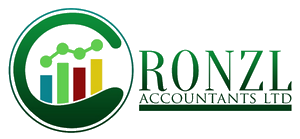Child benefits and tax? If you’re wondering about the connection between this blog post will help clarify why you received a letter from the HMRC regarding paying tax on child benefits.
For those unfamiliar with the UK tax system or with limited knowledge of UK tax, parents in the UK who are responsible for raising children receive child benefits if they meet the necessary criteria.
The most common scenarios in which parents are not eligible for this benefit are when their child is over the age of 16 and not in education or training, or if the parents have no access to public funds due to their immigration status.
Other situations that may disqualify parents from receiving child benefits include if their children are living with someone else, if their children have been in the care of local authorities for more than 8 weeks, or if their children have been in the hospital or residential care for more than 12 weeks.
These payments are calculated based on the number of children the parent supports, and parents can choose to receive them either weekly or every 4 weeks.
Unlike some other forms of support that are based on household income, either parent can apply to receive child benefits.
For the tax year April 23/24, the weekly rates for child benefits are £24.00 for the eldest child and £15.90 for any additional children for which the parents are applying for child benefits.

Why are you paying tax on child benefits?
In 2013, the HMRC implemented a tax charge called the High Income benefit tax charge to ensure that child benefit goes to families in need, rather than any qualifying family.
This law allows the recovery of child benefits from families with a partner earning over £50,000 and encourages those earning over £60,000 to stop receiving it. The tax is paid by the partner with the highest income or both partners if they have high incomes.
The reason people earning over £60,000 contacted HMRC to forgo child benefits is because, in addition to losing the benefit, they had to pay accountants to file self-assessment returns.
How was the high-income tax charge applied to the received child benefits?
When it was introduced, individuals earning over £50,000 were notified of these changes. Many of them chose to stop claiming child benefits based on their proximity to £60,000.
In 2023, there are still many individuals in this income bracket who are unaware of the high-income tax charge.
Once HMRC catches up with their income affairs, they will be advised to file a self-assessment return to declare the received child benefit and repay the amount owed.
Why should you submit a self-assessment return for child benefits payments received?
If your income is over £50,000, you are required to pay tax on the child benefit you receive. This needs to be reported on your self-assessment return and the applicable taxes must be paid.
Even if your other income has already been taxed through PAYE (payroll), if you earn over £50,000 and receive more child benefits, you will automatically fall under the self-assessment regime.
However, you have the option to not receive child benefits if your income exceeds £50,000. To exercise this option, you must inform HMRC by completing the Child Benefit claim form and stating that you do not wish to receive any payments.
This is commonly referred to as “opting out.” If you would like to opt out, please click here
Some parents choose to opt out due to the complexities and stress associated with submitting self-assessment annually and paying tax on the child’s benefit received from HMRC.

What happens if you’ve already been caught by the High Income Tax Charge?
I mentioned before, that it’s surprising that even after 10 years, many taxpayers earning over £60,000 are still unaware of this tax charge.
Unfortunately, ignorance is not a valid excuse for the revenue.
If you’ve been receiving child benefits for all these years and are due for the High Income Benefit Charge, you will automatically be included in the Self-assessment regime.
This means you’ll have to file tax returns for each of the tax years that are due.
How to Register Your Business with HMRC for Self-Assessment?
To register for self-assessment under the high-income tax charge regime, follow these steps:
- Visit the online registration portal .
- This is the easiest and quickest way to register.
- Choose the self-assessment option and provide the necessary information as prompted.
- Complete the registration process by submitting your details.
By following these steps, you can easily register your business with HMRC for self-assessment.
To complete the registration, you will need to create a government gateway account and provide the following information:
- National Insurance number
- Full name
- Date of birth
- The date you moved into your current address
- Email address
- Phone number
- Recent payslip (within the last 3 months) or your P60
- British passport details
you have finished the registration process, HMRC will issue you a Unique Tax Reference (UTR) number.

If you have already registered for self-assessment in the past, you should already have a UTR number, which is required for this registration as well.
Upon completion of your registration, HMRC will send you a confirmation letter that includes your UTR number.
If you do not receive this letter within six weeks, please get in touch with HMRC to inform them that you previously registered for self-assessment.
It is advisable to keep this letter with your UTR number safe, as you will need it whenever you submit your returns.
Conclusion on High-Income Tax Charge
Thank you for reading this blog post.
If you need assistance with making this declaration, please do not hesitate to contact us.
